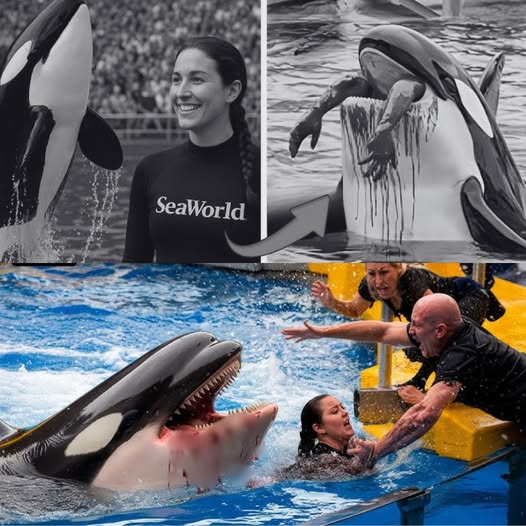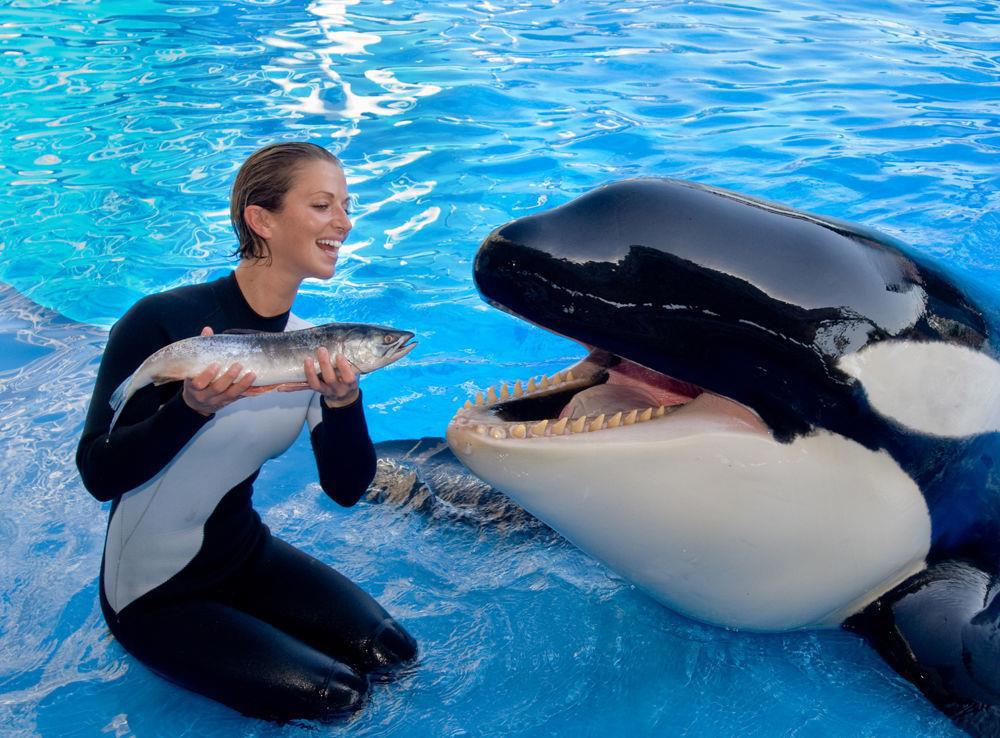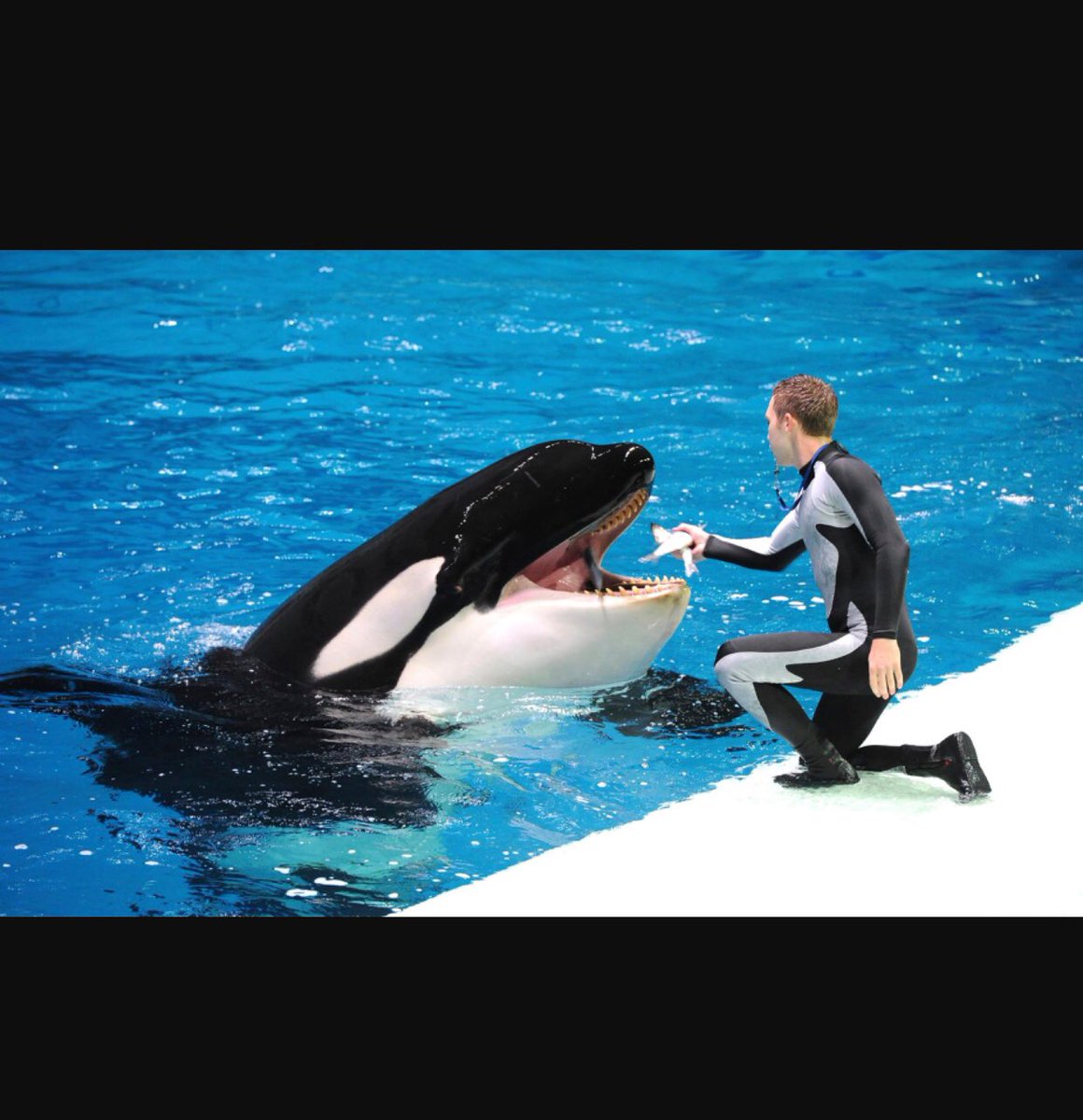
The tragic death of whale trainer Jessica Radcliffe at a marine park has sent shockwaves through the public, raising profound questions about the safety of working with captive marine animals and the ethical implications of keeping such intelligent creatures in confinement. The incident, which occurred in front of an audience that included children, has sparked intense debate about whether the animals involved—particularly a dolphin implicated in the event—acted with intent or instinct. Experts have since analyzed the deadly move that took Jessica’s life, piecing together a complex narrative that reveals disturbing truths about the captivity industry, animal behavior, and the risks faced by trainers who dedicate their lives to working with marine mammals.
Jessica Radcliffe, a seasoned trainer with years of experience, was performing a routine show at a well-known marine park when the incident occurred. According to eyewitness accounts, the event unfolded during an interactive segment involving a dolphin, a species often perceived as friendly and docile. Unlike orcas, which have been linked to fatal incidents in the past, dolphins are rarely associated with such tragic outcomes. However, on this fateful day, the dolphin executed a maneuver that resulted in Jessica being pulled into the water, leading to catastrophic injuries. The specifics of the incident remain under investigation, but initial reports suggest that the dolphin may have grabbed Jessica by her clothing or limb, dragging her underwater in a manner that prevented her from resurfacing. The audience, including children, watched in horror as the scene unfolded, with park staff scrambling to intervene.
The question at the heart of this tragedy is whether the dolphin “knew” what it was doing. Marine mammal experts have offered varied perspectives on this issue, emphasizing the complexity of cetacean behavior. Dolphins, like orcas, are highly intelligent creatures with advanced cognitive abilities, capable of problem-solving, social bonding, and even self-awareness. Dr. Naomi Rose, a marine mammal scientist with the Humane Society, explains that dolphins in captivity often experience significant stress due to their unnatural environment. “These animals are confined in small, artificial tanks, far removed from the vast, dynamic ocean they’re built for,” she notes. “This can lead to frustration, boredom, or even psychological distress, which may manifest in unpredictable behaviors.” Rose suggests that the dolphin’s actions may not have been malicious but rather a response to an environment that fails to meet its physical and emotional needs.
Other experts, however, argue that attributing human-like intent to a dolphin’s actions is misleading. Dr. John Jett, a former SeaWorld trainer turned professor, points out that dolphins lack the capacity for premeditated violence in the way humans understand it. “Their behavior is driven by instinct, training, and environmental cues,” he says. “If a dolphin grabs a trainer, it could be mimicking a trained behavior gone wrong, reacting to a perceived threat, or simply engaging in play that’s inappropriate for a human.” Jett emphasizes that trainers are often taught to interpret animal behavior through the lens of operant conditioning, where animals are rewarded for specific actions. However, this training cannot eliminate the inherent unpredictability of working with wild animals, especially in high-stress environments like marine parks.
The incident has reignited scrutiny of the captivity industry, particularly in light of past tragedies involving orcas, such as the 2010 death of SeaWorld trainer Dawn Brancheau. Brancheau was killed by Tilikum, an orca with a history of aggressive incidents, prompting widespread criticism of marine parks and their safety protocols. The parallels between Jessica’s death and earlier cases are striking: both involved experienced trainers, public performances, and animals that may have been pushed beyond their psychological limits. The 2013 documentary Blackfish brought global attention to the ethical concerns of keeping orcas in captivity, highlighting how confinement can lead to aggression and abnormal behavior. Jessica’s case suggests that similar issues may extend to dolphins, challenging the industry’s narrative that these animals thrive in captivity.
One disturbing truth emerging from this tragedy is the lack of transparency within the marine park industry. Former trainers have revealed that critical information about animals’ behavioral histories is often withheld from staff. Samantha Berg, a former SeaWorld trainer, has spoken about how she was unaware of Tilikum’s involvement in previous deaths until after leaving the industry. Similarly, questions have been raised about whether Jessica and her colleagues were fully informed of the dolphin’s behavioral tendencies or past incidents. “Trainers are often kept in the dark about the risks,” Berg states. “This creates a false sense of security that puts both humans and animals in danger.” The failure to share such information not only endangers trainers but also perpetuates a system where profit is prioritized over safety.

The role of the audience, particularly children, adds another layer of complexity to this tragedy. Marine parks market themselves as family-friendly destinations, with shows designed to entertain and educate. However, witnessing a fatal incident can have lasting psychological effects on young spectators. Child psychologists warn that such events can lead to trauma, fear of animals, or confusion about the relationship between humans and wildlife. “Children may struggle to process why an animal they’ve been taught to see as friendly could cause harm,” says Dr. Emily Carter, a child development expert. This raises ethical questions about the appropriateness of using wild animals for entertainment, especially when the risks are so poorly understood.
Regulatory bodies, such as the Occupational Safety and Health Administration (OSHA), have also come under scrutiny following Jessica’s death. In the wake of Brancheau’s death, OSHA imposed stricter safety regulations on SeaWorld, including banning trainers from entering the water with orcas during shows. However, similar regulations for dolphin interactions are less stringent, reflecting an assumption that dolphins pose less risk. Jessica’s death challenges this assumption, prompting calls for a comprehensive review of safety protocols across all marine mammal interactions. “If we’ve learned anything, it’s that no cetacean is entirely predictable,” says Dr. Rose. “We need to rethink how we manage these interactions, if they should happen at all.”
The broader implications of Jessica’s death point to a need for systemic change in the captivity industry. Animal welfare advocates, such as Ric O’Barry of the Dolphin Project, argue that the only solution is to phase out the use of dolphins and orcas in entertainment. “These animals don’t belong in tanks,” O’Barry asserts. “They’re not here for our amusement—they’re complex beings with their own lives and needs.” Proposals for natural sea pens, where captive animals can live in environments closer to their natural habitats, have gained traction as alternatives to traditional marine parks. Such sanctuaries would allow animals to experience the tides, currents, and space they’re denied in concrete tanks.

Ultimately, the disturbing truth behind Jessica’s death lies in the collision of human ambition and animal instinct. The marine park industry has long profited from the charisma of dolphins and orcas, presenting them as willing performers in a carefully curated spectacle. Yet, incidents like this reveal the fragility of that illusion. Whether the dolphin “knew” what it was doing may never be fully answered, but the tragedy underscores a deeper reality: captivity alters the behavior of intelligent, social animals in ways that humans are only beginning to understand. As experts continue to analyze the deadly move that took Jessica’s life, one thing is clear—the cost of keeping marine mammals in captivity is far greater than the price of a ticket. The industry must confront these truths, not only to prevent further loss of life but to honor the complex, sentient creatures it has exploited for decades.